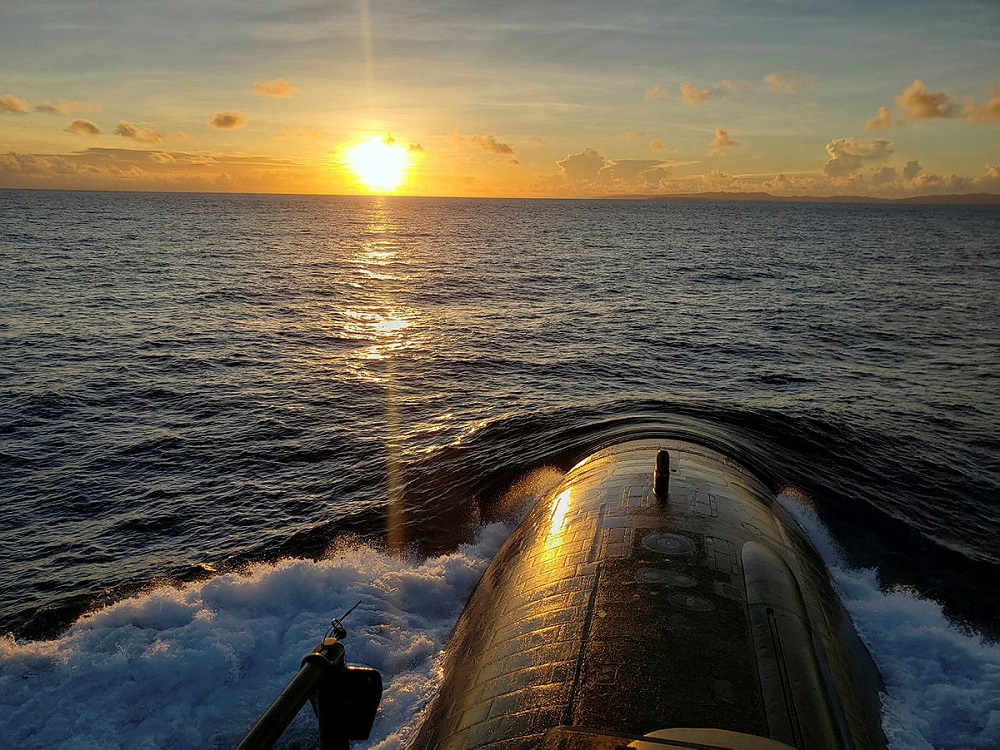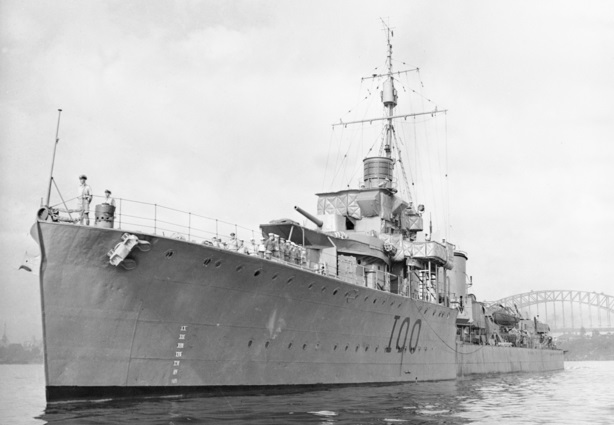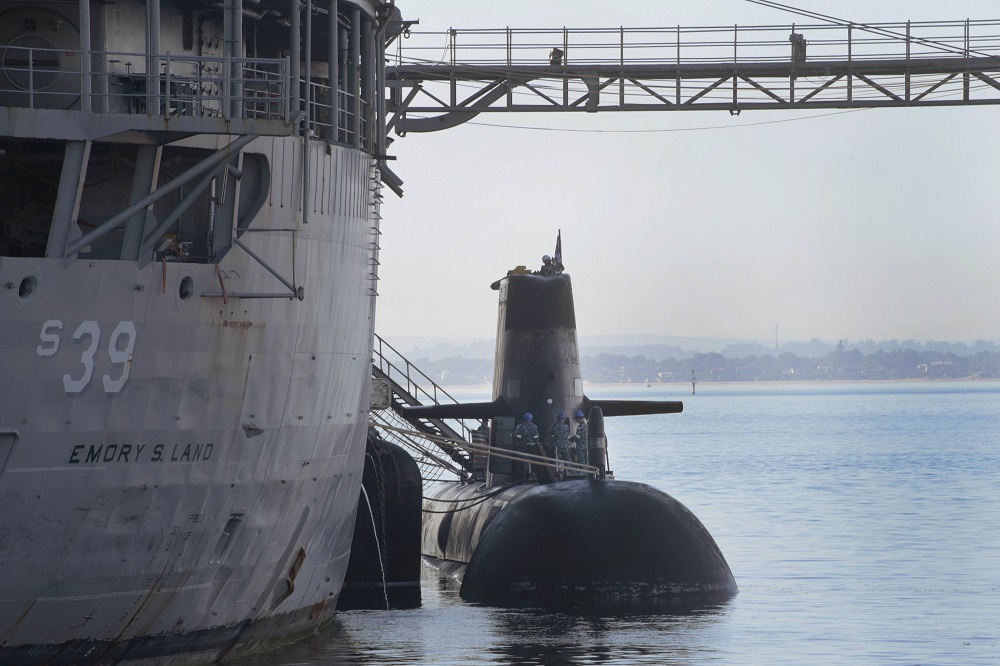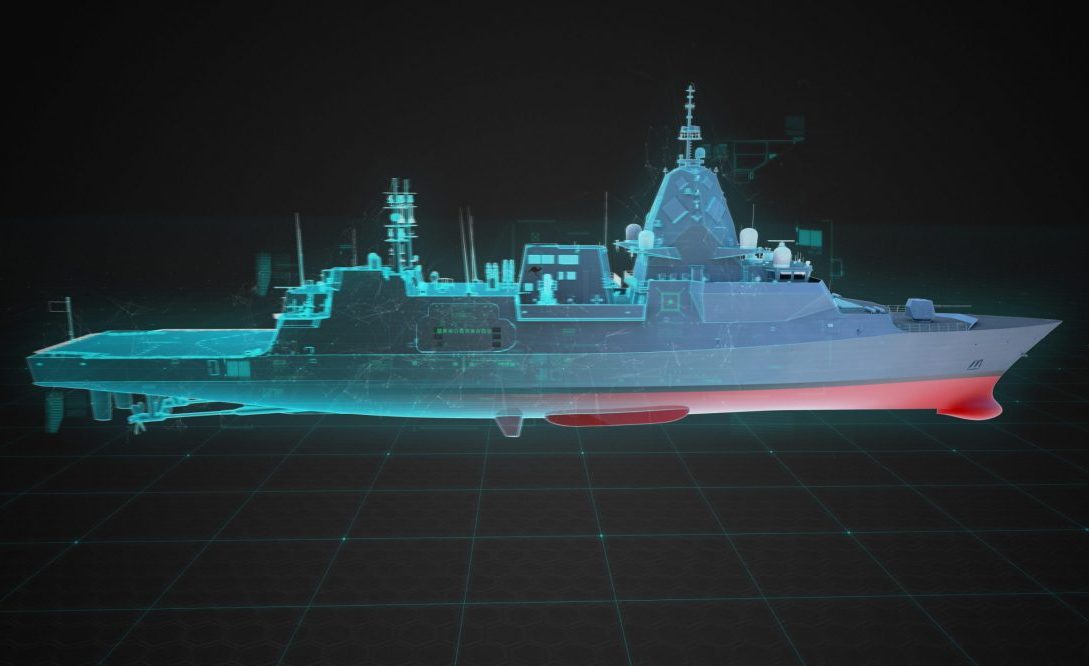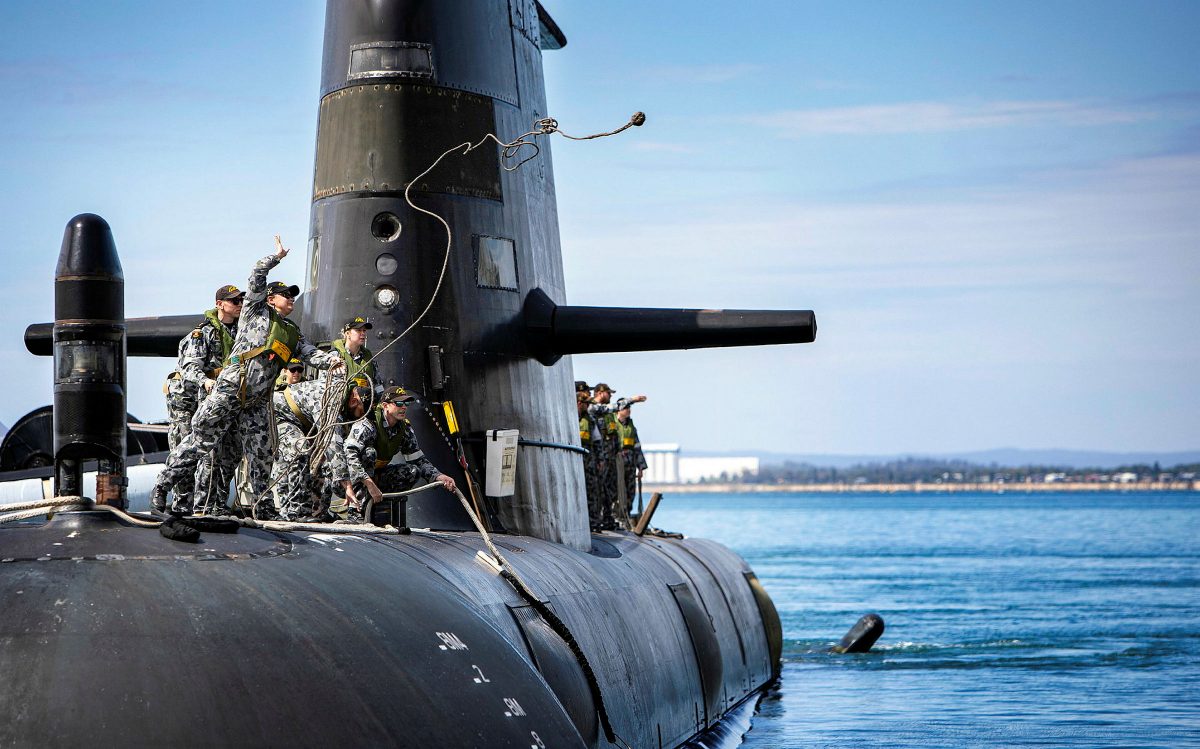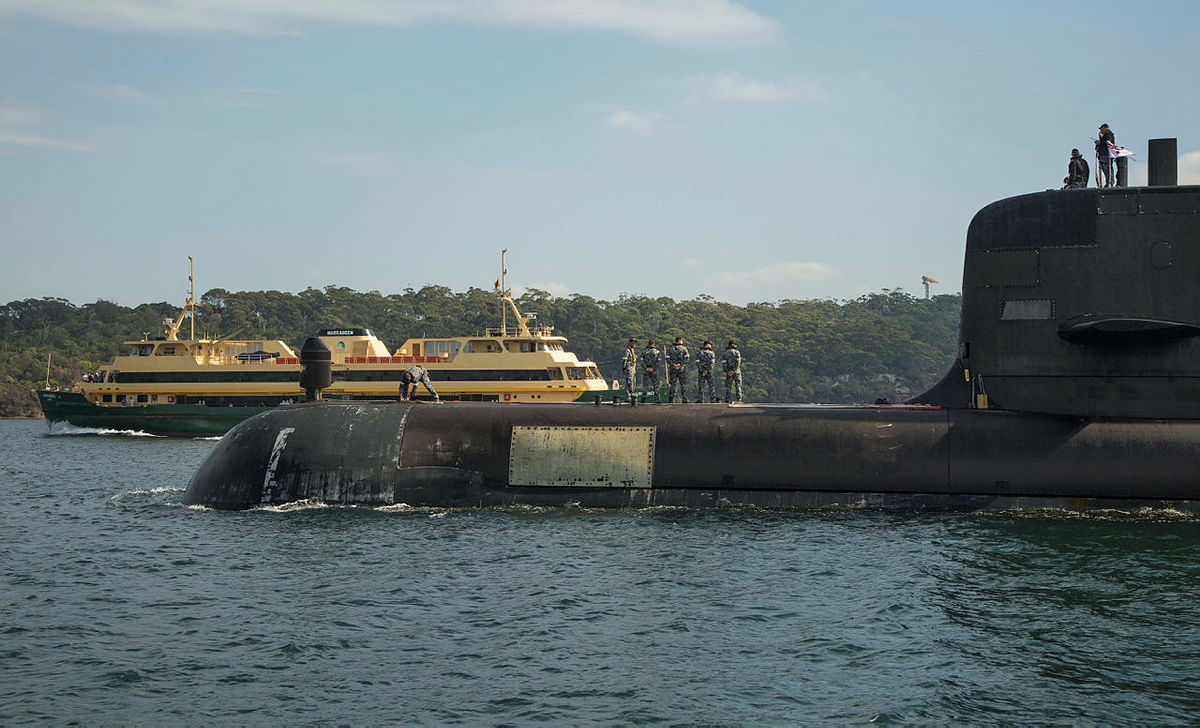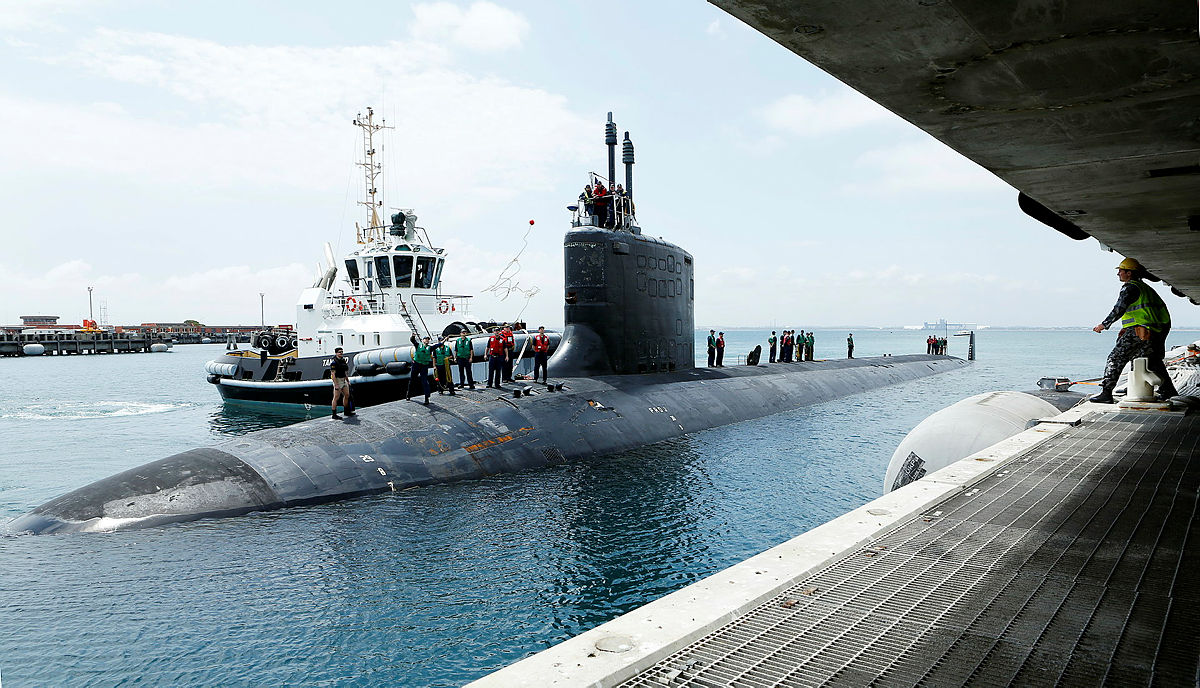Editors’ picks for 2022: ‘Australia’s “damn the torpedoes” path to nuclear-powered submarines’
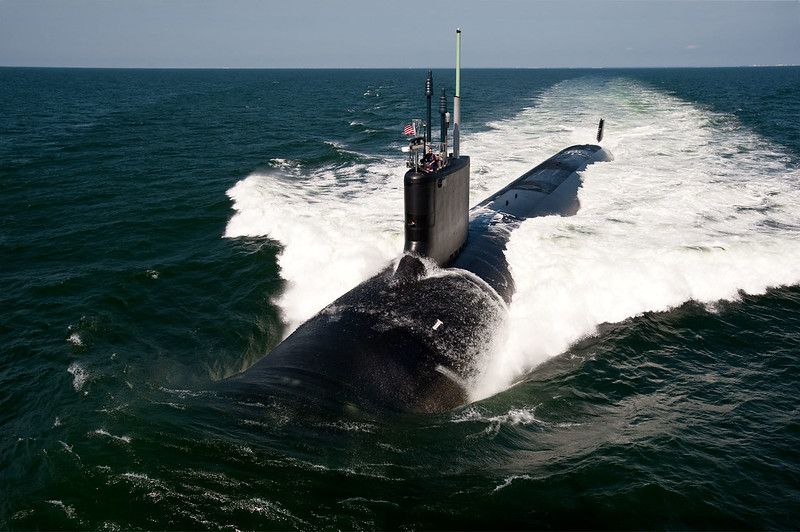
Originally published 4 October 2022.
I’ve often thought that Australia’s submarine transition is a wicked problem, perhaps one of the most wicked in the public policy arena. A wicked problem is one that is difficult or even impossible to solve because key stakeholders have fundamentally different interests and requirements. No solution can satisfy them all. It’s not just possible, but inevitable that intelligent people will be committed to very different solutions to wicked problems.
I was reminded of this recently after my colleague Andrew Nicholls and I had written a series of articles in The Strategist unpacking the schedule of the transition from the Collins-class submarine to a future nuclear-powered attack submarine (SSN), examining the likelihood of a capability gap and considering whether a new conventional submarine could fill that gap. After the last piece, I received lengthy responses from two retired senior naval officers. They agreed with each other that we were wrong in our analysis of the issues. That’s not unusual; I’m quite used to people pointing out my errors. What was more interesting is that the two officers took diametrically opposed positions to each other. But, of course, that is the nature of wicked problems: subject-matter experts will disagree.
Officer 1 was strongly opposed to a new conventional submarine, arguing that the Royal Australian Navy couldn’t sustain three classes of submarines (the Collins, the new boats and SSNs) and Australia couldn’t simultaneously conduct three major submarine programs (the Collins life-of-type-extension, the new boats and SSNs). Instead, ‘maximum effort must go into acquiring some SSNs as fast as possible, with the first few probably built overseas’.
Officer 2 agreed with the ultimate need for SSNs but argued that the days of the conventional submarine were far from over, although they may need to be used differently to remain relevant. The best way forward was to accept the long timelines involved in the transition to SSNs and fill the gap by building more Collins-class boats. They would include all the upgrades installed since the original build program plus those planned for the life-of-type-extension program.
There are, of course, many subvariants of this second position, each advocating a different conventional submarine solution. Ultimately, the two positions are irreconcilable—either you acquire a new conventional submarine or you don’t. But they do set out the two broad pathways forward: go all-in on getting SSNs as fast as possible and live with the risks that arise, or embark on a deliberate, extended transition that is built around addressing the risks of that process.
We’ve looked at the second of these two approaches in previous work. That’s because when you take a standard approach to capability acquisition, it looks like the safer one. But what if we accept that AUKUS is not the standard approach to capability acquisition? Moreover, if we accept the argument of proponents of SSNs that conventional submarines will become obsolete in key areas in which Australia might want to operate, then the wicked problem looks somewhat different. No amount of conventional submarine capability will meet our requirements. And if we take the navy at its word that Australia can’t manage three huge submarine programs and operate three distinct classes of submarine, a new conventional boat would simply add to our problems.
So, what would a damn-the-torpedoes accelerated development of SSN capability look like? Above all, it would need to embrace the fact that an Australian SSN capability isn’t going to be a sovereign capability; Australia will always be dependent on our major partner for the acquisition, sustainment and, to a degree, operation of the capability. But once we accept that, several possibilities outside the traditional approach open up that embrace the concept of leveraging our AUKUS partners’ capabilities.
Various elements of this potential path have been suggested already, and, indeed, some are already getting underway. They include:
- training of Australian submariners at US and UK facilities and then on their boats
- leasing and/or purchasing of older US boats for training, as either seaworthy submarines or moored training vessels
- provision to Australia of US Navy boats already in service or on the production line
- joint US and Australian investment in expanding US industrial capacity to build more boats faster
- joint Australian–US crewing of operational US Navy boats
- extended visits or even basing of US boats in Australia
- forward deployment of a USN submarine tender to Western Australia to support SSNs there
- the start of maintenance on those US boats in Australia as soon as possible to develop local industry skills and capacity
- extended visits of Royal Navy submarines to Australia.
Each path has different levels of probability and risk, but in combination could they produce an AUKUS SSN capability in Australia in a faster timeframe than the traditional, by-the-book approach? If we adjust our risk appetite to the urgency and severity of our strategic circumstances and throw the capability acquisition manual out the window, is a combined capability of four to six SSNs operating out of Australia consisting of a mix of RAN, USN and RN boats and crews feasible by the mid-2030s?
And if we’re damning the torpedoes, burning our bridges and crossing the Rubicon, other big capability options might open up. Potentially, we could cancel the Collins life-of-type-extension. After all, one of the key justifications for the scale and scope of the LOTE that has led to its effectively becoming a ‘son of Collins’ was that the new systems being installed would provide the Collins with significant commonality with the cancelled Attack-class submarine and act as a transition step between the two. That reason is now gone. And if conventional submarines are passé, why spend billions keeping them going deep into the 2040s? We could limit the scope of the LOTE to something more akin to a standard full-cycle docking and devote the money and human resources saved to accelerating the SSN program. Or we could upgrade some of the Collins fleet and retire the remainder in the early 2030s without a LOTE or final full-cycle docking.
Certainly, this approach raises many serious questions. For example, as Officer 2 wrote, you can’t rush the development of nuclear stewardship. And it certainly wouldn’t be a traditional Australian-owned and -operated capability, at least in those early stages. Even if it is a viable pathway, we’d still need to invest in mitigating capability risk through systems other than a new conventional submarine. There are many options there too, from the ‘small, the smart and the many’ approach of disposable autonomous systems and guided weapons to the ‘big stick’ approach provided by a long-range strike system such as the US Air Force’s in-development B-21 bomber. But avoiding the expenditure of the very large amount of money that would be needed for a new conventional submarine could make these complementary capabilities financially possible.
Many of the elements I’ve listed here will be necessary, whatever path Australia takes to SSNs. In all honesty, I’m not yet convinced this approach will deliver something by the mid-2030s. The only people with the information needed to determine which of these two broad pathways is the optimal one are those on the nuclear-powered submarine taskforce. It’s good that the government has directed the taskforce and the defence strategic review team to work closely together, because the choice of SSN pathway will likely have major implications for the rest of Defence’s force structure and acquisition program over the coming decades.

